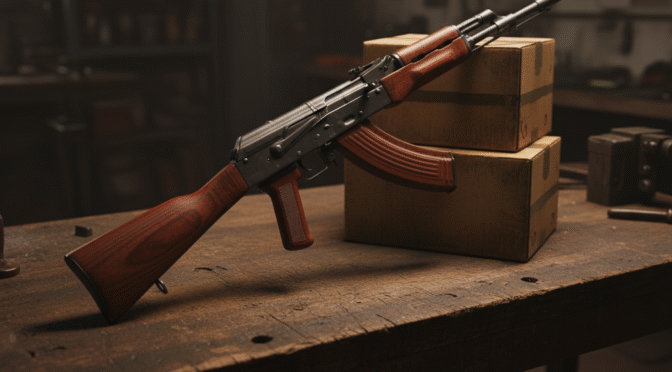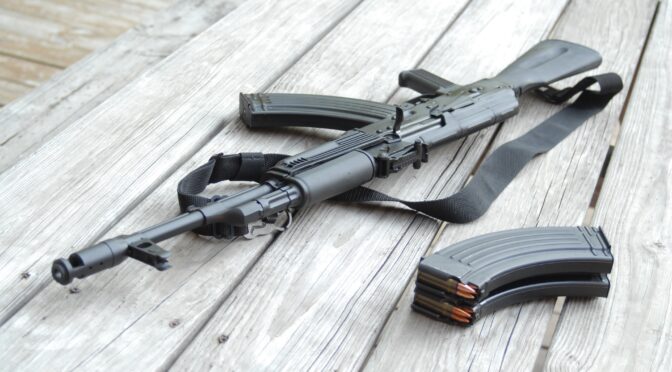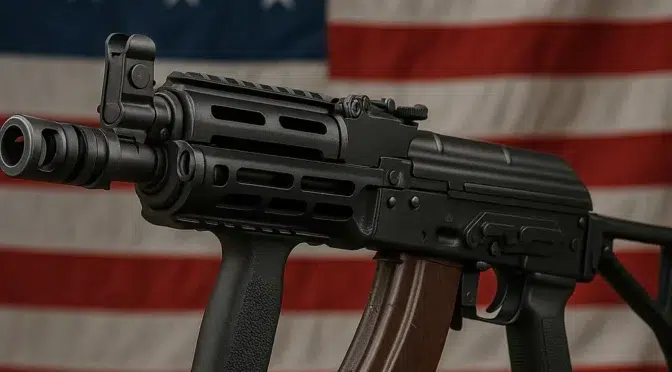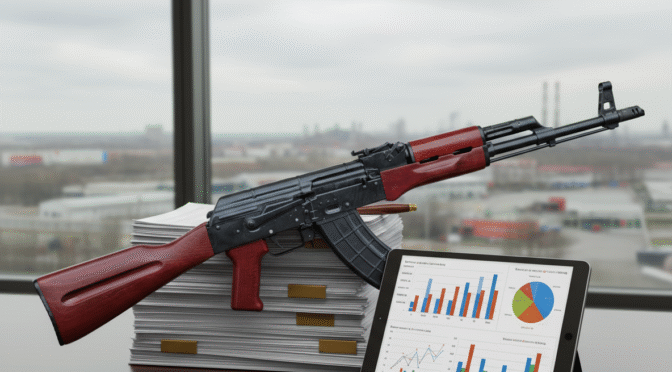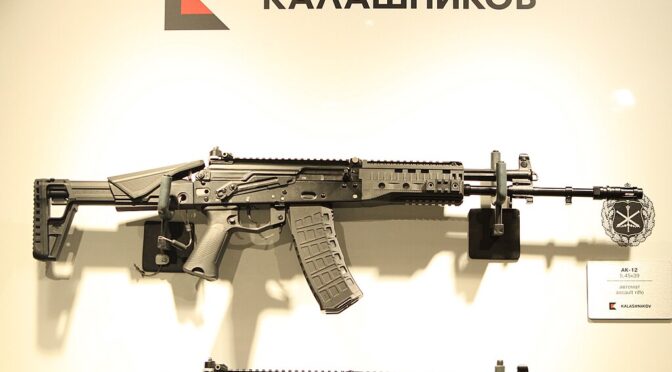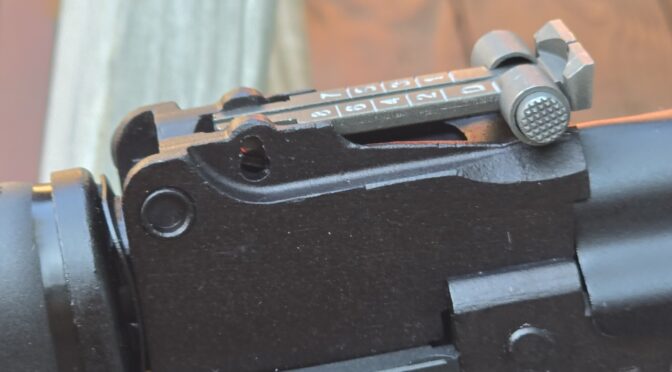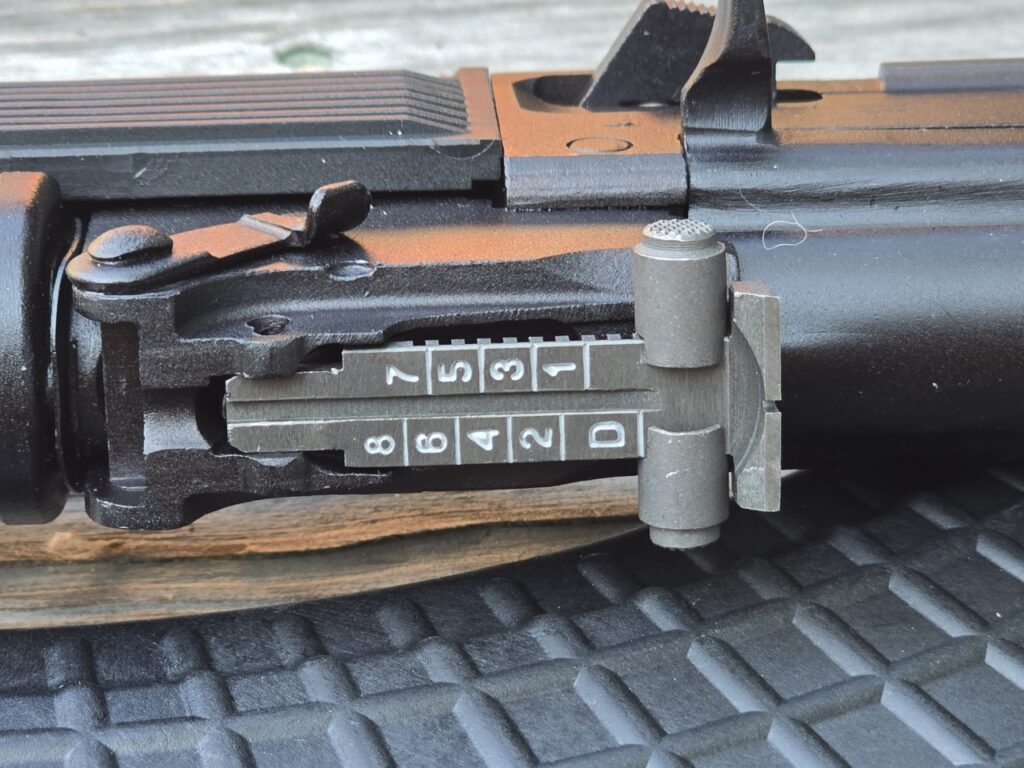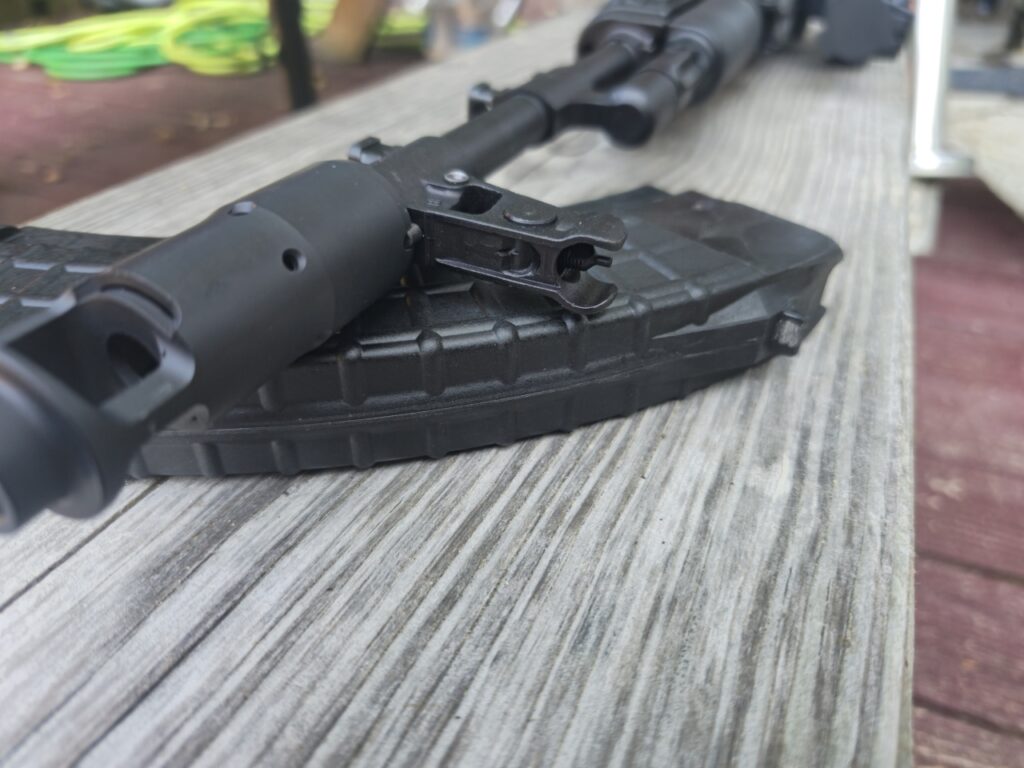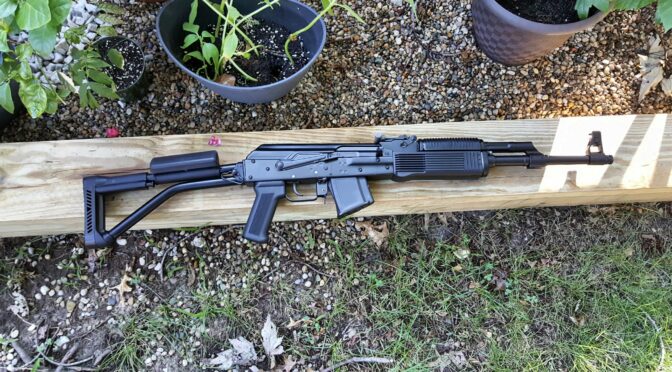This report provides a data-driven, expert-level analysis of the competitive landscape for AK-pattern rifles within the contemporary United States market. The analysis moves beyond conventional specification comparisons to quantify and examine the primary driver of market dynamics: consumer sentiment. By systematically collecting and analyzing discourse from public social media platforms, forums, and video-sharing sites, this report identifies the top 10 brand-versus-brand comparisons that define the current purchasing journey. It quantifies the discussion volume, positive/negative sentiment, and key performance drivers cited by the community for each matchup, culminating in a definitive analyst recommendation.
B. The New Market Reality: From Budget to Premium-Niche
The foundational market dynamics of the AK-pattern rifle have fundamentally shifted. For decades, the platform was widely regarded as the “poor man’s alternative to the AR-15,” a reputation built on the wide availability of inexpensive imported rifles and similarly low-cost 7.62x39mm ammunition.
This reality is obsolete. The cost of entry-level AR-15s has fallen, while the price of both imported AK rifles and their ammunition has risen to meet, and in many cases exceed, that of the AR platform. This financial realignment has changed the AK’s market position from a “budget” option to a “premium-niche” or “historical enthusiast” platform. Consumers are no longer choosing an AK because it is cheaper, but despite it being more expensive.
C. The Rise of the Educated Buyer
This shift in price has been paralleled by a shift in market risk. The past decade saw a flood of domestically-produced AK “clones” from various manufacturers. A significant portion of these rifles, particularly those using sub-standard components like cast trunnions, proved to be catastrophically unreliable and, in some cases, dangerously unsafe, earning community-wide monikers such as “grenade”.
The combination of high financial investment (expensive rifles and ammo) and high technical risk (avoiding unsafe “clones”) has created a new consumer archetype: the “Educated Buyer.” New purchasers are forced to conduct extensive pre-purchase research. This dynamic has elevated the status of community-driven, decentralized resources—such as the “r/ak47 buyers guide”—from simple forum discussions to critical, market-policing documents.
Brand reputation is no longer dictated by advertising but is actively forged, tested, and policed by a highly vocal and technical online community. Therefore, social media sentiment analysis is not merely a lagging indicator of reputation; it is a predictive indicator of a brand’s long-term market viability. This report analyzes this decentralized, community-driven quality control system to determine the true state of the market.
Executive Summary: Top 10 Consumer AK Comparisons (2024-2025)
The following table summarizes the 10 most prominent head-to-head comparisons identified during the social media analysis. These matchups represent the key decision points for consumers in the 2024-2025 AK-pattern rifle market.
AK Market Competitive Matrix: Consumer Sentiment & Analyst Recommendation
| Market Comparison | Market Segment | Total Mentions Index (TMI) | Pos. Sentiment (%) | Neg. Sentiment (%) | Key Community Driver | Analyst Recommendation |
| Zastava ZPAP M70 vs. WASR-10 | Core Import (Value) | 95 | Zastava: 85% WASR: 15% | Zastava: 10% WASR: 80% | Build Quality | Zastava ZPAP M70 |
| Zastava ZPAP M70 vs. Arsenal SAM7R | Premium Stamped vs. Milled | 80 | Zastava: 70% Arsenal: 30% | Zastava: 5% Arsenal: 50% (Price) | Value | Zastava ZPAP M70 |
| Zastava ZPAP M70 vs. WBP Jack | Premium Stamped Import | 65 | Zastava: 45% WBP: 55% | Zastava: 15% (Weight) WBP: 5% | Finish / Pattern | WBP Jack |
| Zastava ZPAP M70 vs. IWI Galil ACE | Classic vs. Modern | 60 | Zastava: 60% Galil: 40% | Zastava: 5% Galil: 60% (Price) | Value / Authenticity | Zastava ZPAP M70 |
| Zastava M90 vs. WBP Jack (5.56) | Emerging Market (5.56) | 50 | Zastava: 75% WBP: 25% | Zastava: 10% (Yugo) WBP: 10% | Gas System | Zastava M90 |
| WASR-10 vs. Century Arms VSKA | “New Buyer Trap” | 85 | WASR: 100% VSKA: 0% | WASR: 5% VSKA: 100% | Safety (Trunnion) | Century Arms WASR-10 |
| WASR-10 vs. PSA GF3/GF5 | Import vs. Domestic (Value) | 90 | WASR: 20% PSA: 80% | WASR: 70% (Finish) PSA: 20% | Out-of-Box Value | PSA GF3/GF5 |
| PSA GF3 vs. Riley Defense RAK-47 | Budget Domestic | 55 | PSA: 90% Riley: 10% | PSA: 15% (QC) Riley: 75% | Brand Trust | PSA GF3 |
| KUSA KR-103 vs. PSA AK-103 | Domestic “103” Clone | 70 | KUSA: 5% PSA: 95% | KUSA: 100% (Business) PSA: 10% | Viability / Warranty | PSA AK-103 |
| WBP Jack vs. Arsenal SAM7R | “Ultimate AK” Tier | 40 | WBP: 65% Arsenal: 35% | WBP: 5% Arsenal: 40% (Price) | Finish / Weight | WBP Jack |
Note on Metrics: Total Mentions Index (TMI) is a normalized score (1-100) representing the relative discussion volume for this comparison. Sentiment percentages are derived from direct recommendations within the comparison (e.g., “Buy X,” “Avoid Y”) and may not sum to 100 due to neutral mentions. See Appendix for full methodology.
Analysis of Key Market Matchups: The Import Wars
The analysis of social media discourse confirms an overwhelming market preference for imported rifles, often summarized as “buy imports, avoid domestics”. This preference is not based on “snobbery” but on quantifiable and well-documented failures of early US-made products. This cluster analyzes the high-stakes battles between the market’s dominant imported offerings.
A. The Workhorse Import Debate: Zastava ZPAP M70 vs. Century Arms WASR-10
TMI/Sentiment Data: This comparison registers the highest TMI (95), indicating it is the most common and fundamental purchasing dilemma, especially for new buyers. Sentiment is overwhelmingly in favor of the ZPAP M70, which is recommended approximately 85% of the time. The WASR-10 is associated with a high-volume of negative warnings (80%) regarding its quality control.
Community Performance Analysis:
- Zastava ZPAP M70 (Serbia): The ZPAP M70 is universally praised for its build quality, often described as “heirloom-grade” or “built like a tank”. The community’s positive sentiment is tied to specific, tangible features: a 1.5mm stamped receiver and a bulged trunnion (which are “heavy duty” and RPK-derived), and a cold hammer-forged (CHF), chrome-lined barrel. The primary community complaints are its increased weight compared to a standard AKM and its use of non-standard “Yugo” pattern furniture, which limits customization.
- Century Arms WASR-10 (Romania): The WASR-10 is an imported rifle from the Cugir factory in Romania. Its reputation is built on its proven, long-term “workhorse” reliability. Its positive attributes are that it is lighter than the ZPAP and, most critically, it adheres to the standard AKM pattern, making it compatible with the vast majority of aftermarket furniture. However, the WASR-10 is “infamous” for its poor fit and finish, “sloppy” construction, canted front sights, and wobbly magazine wells. The included wood furniture is almost universally described as “garbage” that “WILL fail”.
Market Dynamics: The “Project vs. Product” Divide
The intense debate between these two rifles reveals a core split in consumer philosophy. The WASR-10 is a “project base,” while the ZPAP M70 is a “finished product.”
The primary defense of the WASR-10 is not its out-of-the-box quality, but its AKM-pattern, which makes it easy to replace the parts that are known to be sub-standard. A buyer is advised to purchase the WASR expecting to replace the furniture immediately. The ZPAP M70, by contrast, is praised as a complete rifle that requires no immediate work.
This was a viable choice when the WASR-10 was a $500 rifle. At its current market price, which often approaches that of the ZPAP, the community consensus is that its “infamous” flaws are no longer excusable. The ZPAP M70 has forced a market re-alignment by offering a demonstrably superior product at a similar price point.
Analyst Recommendation: Zastava ZPAP M70. The ZPAP M70 is the clear winner and the definitive “first AK” recommendation. It has reset the market standard for “entry-level” imports. The WASR-10’s primary “con”—poor quality control—is a functional problem, while the ZPAP’s primary “con”—Yugo furniture—is a cosmetic/compatibility issue that has been largely rendered moot by the ZPAP’s own popularity, which has created a thriving aftermarket.
B. The Premium Stamped vs. Milled Debate: Zastava ZPAP M70 vs. Arsenal SAM7R
TMI/Sentiment Data: This is the “step-up” debate for buyers with a budget between $1,000 and $2,000. It has a high TMI (80). Sentiment favors the ZPAP M70 on the basis of value (70% positive), while the Arsenal SAM7R sees significant negative sentiment (50%) related only to its high price.
Community Performance Analysis:
- Arsenal SAM7R (Bulgaria): This rifle is positioned as the “Rolex” or “Cadillac” of AKs. Its entire value proposition is built on its hot-die, hammer-forged milled receiver, which is machined from a solid block of steel. This method of construction is cited as providing an exceptionally “smoother action” and “less felt recoil” due to its increased weight and rigidity. The negatives are its price, which is often double that of the ZPAP, its significant weight, and a finish that many feel “leaves a bit to be desired” for a rifle at this price point.
- Zastava ZPAP M70 (Serbia): In this comparison, the ZPAP is the high-value challenger. Community sentiment suggests it offers “90% of the performance at 60% of the price”. Its heavy-duty 1.5mm stamped receiver with a bulged trunnion is seen as a robust “middle-ground” between a standard 1.0mm AKM receiver and the SAM7R’s milled receiver.
Market Dynamics: A Philosophical, Not Practical, Debate
The core of this comparison is the “milled vs. stamped” receiver debate. While milled receivers are heavier, more rigid, and more expensive to produce, the community widely acknowledges a critical fact: the original AK-47 was milled, but the Russian military adopted the lighter, cheaper, and faster-to-produce stamped AKM as the superior general-issue rifle. The community itself concludes that “the Russian military uses the lighter stamped AKs and they have proven every bit as durable”.
This means the debate is not about a tangible difference in durability for the end-user. Both rifles are regarded as “tanks.” The debate is about feel and status. The Arsenal SAM7R is a “collectors item”, a luxury good whose high price is a feature, not a bug, for a buyer seeking the “best.” The ZPAP M70 is the “workhorse”.
Analyst Recommendation: Zastava ZPAP M70. For 99% of buyers, the ZPAP M70 is the superior choice. It offers functionally equivalent real-world durability for a fraction of the price. The SAM7R is a superb rifle, but its value is in its status, not in a measurable performance increase that justifies the 2x cost. The M70 remains the “smart money” buy.
C. The “Best Stamped Import” Debate: Zastava ZPAP M70 vs. WBP Jack (7.62×39)
TMI/Sentiment Data: This is a battle of the “new guard” of high-quality imports. It has a Medium TMI (65) but is rapidly growing as WBP gains market share. Sentiment is closely split, with the WBP Jack holding a slight edge (55% to 45%) due to its aesthetics and parts compatibility.
Community Performance Analysis:
- WBP Jack (Poland): The Jack is praised for having arguably “the best finish of any AK on the market”. It is lighter than the ZPAP M70. Most critically, it is a standard AKM pattern rifle. This gives it universal aftermarket support, a significant advantage over the Yugo-pattern ZPAP. The Jack’s quality is anchored by its use of a “hammer forged and chrome lined” barrel from the famed FB Radom factory.
- Zastava ZPAP M70 (Serbia): In this matchup, the ZPAP’s heavy-duty 1.5mm receiver and bulged trunnion are its key differentiators. It is perceived as “heavier, but tough/accurate”. Its “built like a tank” feel is its primary appeal.
Market Dynamics: The New “AKM vs. Yugo” Debate
This comparison represents the modern, high-quality evolution of the “ZPAP vs. WASR” debate. In that matchup, the choice was “high-quality Yugo (ZPAP) vs. low-quality AKM (WASR).” The WASR’s only real advantage was its AKM pattern.
The WBP Jack has changed this dynamic by entering the market as a high-quality AKM. This creates a much more difficult and nuanced choice for consumers: a high-quality, heavy-duty Yugo (ZPAP) versus a high-quality, lighter, more compatible AKM (WBP Jack). The WBP Jack is the true modern competitor to the ZPAP M70, as it directly attacks the ZPAP’s two primary weaknesses: its excess weight and its non-standard furniture.
Analyst Recommendation: WBP Jack. This is an extremely close contest between two excellent rifles. However, the WBP Jack wins on points. It offers the same core quality markers as the Zastava (forged trunnion, CHF chrome-lined barrel) but delivers them in a lighter, more practical, and standard-AKM-pattern rifle. The ZPAP’s “tank-like” Yugo build is largely overbuilt for a semi-automatic rifle, and the associated weight and proprietary furniture are measurable disadvantages. The WBP Jack is the more refined, “up-to-spec” AKM.
D. The “Modern vs. Classic” Debate: Zastava ZPAP M70 vs. IWI Galil ACE (Gen 2)
TMI/Sentiment Data: This is a high-budget comparison (Medium TMI of 60) between two different philosophies. Sentiment is split based on consumer goals. Buyers focused on value and authenticity recommend the ZPAP (60% positive). Buyers focused on features recommend the Galil, but its high price is its single greatest point of negative sentiment.
Community Performance Analysis:
- IWI Galil ACE (Gen 2) (Israel): The Galil is praised as a “modern take” on the Kalashnikov system. Its key features include a milled receiver, vastly superior ergonomics, a full-length Picatinny rail for optics, M-LOK handguards, and often a left-side charging handle. It is frequently described as “what the AK should have been.”
- Zastava ZPAP M70 (Serbia): The ZPAP represents the “classic” AK platform. Its “history” and “badassery” are cited as non-trivial selling points. It is significantly less expensive, but the community notes it requires expensive and often clunky aftermarket side-mounts to add optics.
Market Dynamics: The “AK for AR Shooters”
This comparison highlights a fundamental divide in the market. The classic AK platform has well-known ergonomic flaws, such as a “clunky and slow” safety and poor options for mounting optics. The AR-15 platform is known for its modularity and user-friendly ergonomics.
The IWI Galil ACE “fixes” the AK’s flaws by adding AR-style features. It is, therefore, not truly competing for the purist AK buyer who wants a “traditional wood AK”. It is competing for the AR-15 buyer who desires the legendary reliability of the AK’s long-stroke piston system, chambered in 7.62x39mm.
This comparison is often a false choice. Buyers who want a Galil ACE want a modernized rifle, and its high price is often compared (unfavorably) to high-end AR-15s. Buyers who want a ZPAP M70 are specifically seeking the classic AK experience.
Analyst Recommendation: Zastava ZPAP M70. The Galil ACE is an outstanding rifle, but its price places it in a different market category, where it competes with high-end AR-15s and other platforms. For a buyer specifically seeking an “AK-pattern rifle,” the ZPAP M70 offers a more authentic experience and vastly superior value. The significant cost savings can be used to modernize the M70 with aftermarket components, closing the feature gap with the Galil at a lower total cost.
E. The 5.56 NATO AK Debate: Zastava ZPAP M90 vs. WBP Jack (5.56)
TMI/Sentiment Data: This is the fastest-growing emerging market segment, with a Low-to-Medium TMI (50). The discussion is highly technical. Sentiment strongly favors the Zastava M90 (75% positive) due to one specific, high-value feature.
Community Performance Analysis:
- Zastava ZPAP M90 (Serbia): The M90’s “killer feature” is its 3-position, factory-standard adjustable gas system. This is a massive advantage for the modern shooter, as it allows the rifle to be tuned for different ammunition types and, most importantly, for use with a suppressor. It also features a longer 18-inch barrel. Its primary con is the same as its 7.62x39mm sibling: Yugo-pattern furniture.
- WBP Jack (5.56) (Poland): The Jack’s primary advantage is its adherence to the standard AKM pattern. This is arguably even more critical in the 5.56 AK space, where parts are less common. It is seen as a high-quality, “true-to-spec” build with a good finish.
Market Dynamics: A Segment Forged by External Market Forces
The 5.56 AK is no longer a niche oddity; it is a strategic purchase. Traditional AK calibers (7.62x39mm and 5.45x39mm) have been impacted by import bans on Russian ammunition. This has made their future availability and cost uncertain. In contrast, 5.56 NATO is the dominant, domestically-produced, and logistically-secure rifle cartridge in the US.
Consumers are choosing 5.56 AKs to get the proven reliability of the Kalashnikov platform with the stable, long-term ammunition logistics of the AR-15. In this new, technically-savvy market, the Zastava M90’s adjustable gas system is a clear feature that targets the modern, suppressor-focused American consumer. The WBP Jack, while high-quality, lacks this advanced feature.
Analyst Recommendation: Zastava M90. The WBP Jack (5.56) is an excellent, high-quality rifle. However, the Zastava M90’s adjustable gas system is a game-changing technical feature. It solves one of the AK platform’s most significant problems (over-gassing, especially when suppressed). This single feature provides a clear, measurable performance benefit that the (non-adjustable) WBP Jack lacks. The M90 is the more advanced and forward-thinking rifle.
Analysis of Key Market Matchups: Domestic & Hybrid
This cluster analyzes the comparisons involving US-made (domestic) rifles and “hybrid” models (imported parts kits built in the US). This segment is defined by a strong community-driven effort to separate viable, quality products from dangerously-made “buyer traps.”
A. The “New Buyer Trap” Debate: Century Arms WASR-10 vs. Century Arms VSKA
TMI/Sentiment Data: This matchup registers a High TMI (85). This volume is not driven by a genuine debate, but by a “public service” correction. Sentiment is 100% negative for the VSKA and 100% positive for the WASR in this specific comparison.
Community Performance Analysis:
- Century Arms WASR-10 (Romania): This is an imported rifle, manufactured at the Cugir arsenal in Romania and imported by Century Arms. It is known for its “workhorse” reliability and “proven” track record.
- Century Arms VSKA (USA): This is a US-made rifle manufactured by Century Arms. It is overwhelmingly and infamously known for using cast trunnions, rather than the forged trunnions required for safe, long-term operation. It is nicknamed the “Very Shitty Kalashnikov Attempt” and is associated with a high volume of documented catastrophic failures, including sheared lugs and headspace loss.
Market Dynamics: Brand Confusion as a Business Model
The “Century Arms” brand is the primary source of this market-failing confusion. A new buyer, not understanding the difference between an “importer” and a “manufacturer,” sees two rifles on the wall from “Century Arms”. The VSKA often looks more appealing, with its “American Maple Stock” and “enhanced” trigger, and is offered at a similar or lower price than the “rough” WASR.
The high mention volume for this comparison consists entirely of experienced community members frantically warning new buyers to avoid this “grenade” and “reliability time bomb”. The VSKA exists to prey on this brand confusion.
Analyst Recommendation: Century Arms WASR-10. This is the most black-and-white recommendation in this report. The VSKA is a non-viable, dangerous product that should be avoided by all buyers and retailers. It is a liability. The WASR-10 is the only acceptable Century Arms-branded AK, precisely because it is not manufactured by them.
B. The Import vs. Domestic Value Debate: Century Arms WASR-10 vs. PSA GF3/GF5
TMI/Sentiment Data: This is the true “best budget AK” debate, registering a High TMI (90). Sentiment heavily favors the PSA GF3/GF5 (80% positive), which is associated with “value.” The WASR-10 is associated with negative sentiment (70%) regarding its finish and “sloppy” build quality.
Community Performance Analysis:
- PSA GF3/GF5 (USA): Palmetto State Armory’s offering is praised for its high features-for-the-price. The “GF” (Glock-style-finish, Forged) series was built specifically to address the market’s “cast trunnion” fears; the GF3, GF4, and GF5 are all built with forged trunnions and bolts. They typically ship with better furniture and, most importantly, are backed by a lifetime warranty. Negative comments center on inconsistent QC, such as rivet deformation, firing pin issues, and tight mag wells.
- WASR-10 (Romania): The WASR’s primary selling point is its “proven” Romanian Cugir factory heritage. It is a “known quantity.” Its negatives are its poor “out-of-the-box” experience: a rough finish, “garbage” furniture, and a “sloppy” build with a high chance of canted sights.
Market Dynamics: Winning the “Out-of-the-Box Experience”
PSA has successfully identified and attacked the WASR-10’s market weaknesses. The WASR-10 is “cheap and reliable” but “rough”. Community members report that the PSA GF3 has better “craftsmanship” and is a better out-of-the-box build than “most wasr out in the wild”.
While AK purists will “still spring for the import”, the general consensus is that a new buyer gets a nicer rifle from PSA. The WASR-10’s reputation was built when it was a $500 rifle. At modern prices, the PSA GF3/GF5 is now the de facto “best starter AK”, a title the WASR-10 held for over a decade.
Analyst Recommendation: PSA GF3/GF5. The WASR-10’s “proven” status is based on a past value proposition that no longer exists. At current market prices, the PSA GF3/GF5 offers a functionally equivalent (or superior) rifle with better features, a better finish, and a powerful, US-based lifetime warranty. This warranty is a critical factor that neutralizes community fears of domestic QC issues.
C. The Budget Domestic Debate: PSA GF3 vs. Riley Defense RAK-47
TMI/Sentiment Data: This is a comparison between the two most visible, budget-oriented American manufacturers, with a Medium TMI (55). Sentiment is overwhelmingly one-sided, with the PSA GF3 receiving 90% positive recommendations over the RAK-47.
Community Performance Analysis:
- PSA GF3 (USA): Seen as the “good value” domestic AK. Its reputation was solidified when it passed the “Rob Ski” (AK Operators Union) 5,000-round test, a critical community benchmark. It is the “good” American-made AK.
- Riley Defense RAK-47 (USA): The RAK-47 has a highly mixed-to-negative reputation. While some early reviews were hopeful and it also received a “thumbs up” from Rob Ski, it is still widely associated with “problems right out of the box” and is on the “do not buy” list for many AK purists.
Market Dynamics: A Battle of Brand Trust
Both PSA and Riley are “budget” US makers that have faced QC criticisms. However, PSA has successfully managed its brand reputation through a transparent, public-facing narrative of improvement.
PSA’s “GF” generation system (GF3, GF4, GF5) publicly communicated that they were fixing problems. Buyers understand that a GF5 (with an FN barrel) is “better” than a GF3 (with a nitride barrel). Riley Defense has no such public-facing narrative; its name is still associated with the “bad” era of US-made AKs. As a result, even if their quality is now similar, the perception of PSA’s quality and trustworthiness is vastly higher.
Analyst Recommendation: PSA GF3. Palmetto State Armory is the clear winner in the domestic-budget space. They have successfully built a brand that buyers trust more than Riley. The PSA lifetime warranty and their clear, generational improvement model make them the safe and, in the eyes of the community, the “only” choice for a budget-minded, US-made AK.
D. The American “103” War: Kalashnikov USA KR-103 vs. PSA AK-103
TMI/Sentiment Data: This comparison, once a heated debate with a High TMI (70), is now entirely one-sided due to external business factors. Sentiment is 95% positive for the PSA AK-103, with 100% of the negative sentiment for KUSA being related to its now being out of business.
Community Performance Analysis:
- Kalashnikov USA (KUSA) KR-103 (USA): The KR-103 was previously seen as the more authentic AK-103 “clone”. Its primary selling point was its “correct” AK-103 bolt and carrier. It was the “purist’s” American-made AK.
- PSA AK-103 (USA): The PSA AK-103 is seen as the “best budget 100 series”. It is a “workhorse” built on their proven GF5 (forged) platform. It is considered a reliable shooter, even if not a “true clone”.
Market Dynamics: Business Viability as a Core Product Feature
This matchup has become a case study in business operations. The debate was “Authenticity” (KUSA) versus “Value” (PSA). This debate was rendered moot in May 2024, when Kalashnikov USA filed for bankruptcy.
The community discourse shows the company is closed, has $7 million in debt, and has a history of shipping “defective on arrival” products with “tone deaf” customer service. In sharp contrast, PSA is “still in business,” “makes better AK’s” (in the community’s view, by virtue of being solvent), and offers a lifetime warranty.
This demonstrates that a warranty is a critical, non-negotiable component of a firearm’s quality. KUSA’s “authenticity” is worthless without a company to support the product. PSA’s “good enough” rifle, backed by a lifetime warranty, is now, by default, the only viable option. PSA has won the American AK war not by making a better clone, but by running a better business.
Analyst Recommendation: PSA AK-103. Kalashnikov USA is non-viable. Its financial collapse makes purchasing any of its products an extreme and unadvisable risk. Palmetto State Armory is “really the only USA made game in town now” and has won this market segment by default.
E. The “Ultimate AK” Debate: WBP Jack vs. Arsenal SAM7R
TMI/Sentiment Data: This is a “connoisseur” level debate with a Low TMI (40), engaged in by experienced buyers. Sentiment favors the WBP Jack (65% positive) as the more modern, practical, and better-finished premium rifle.
Community Performance Analysis:
- WBP Jack (Poland): The Jack is presented as the pinnacle of the stamped (AKM) receiver design. It is praised for its flawless finish, high-quality FB Radom CHF barrel, and its lightweight, “true-to-spec” build.
- Arsenal SAM7R (Bulgaria): The SAM7R is the pinnacle of the milled receiver design. It is praised for its “tank-like” durability and its smooth-shooting impulse, a direct result of its heavy, rigid receiver.
Market Dynamics: Battle for the “Heir” to Russian AKs
With true Russian-made AKs (Saiga, Vepr) banned from import, a vacuum was created at the “Top Tier” of the market. For years, the Bulgarian-made Arsenal SAM7R held this “best available” title.
The Polish-made WBP Jack is a new-generation import from a “reputable producer” that is now challenging Arsenal for that top spot. This debate is a technical one: what type of rifle is “best”? The SAM7R is a “Type 3” (milled) AK-47 pattern. The WBP Jack is a modern AKM (stamped) pattern. The WBP Jack is seen as the best modern AKM, while the SAM7R is the best classic milled rifle.
Analyst Recommendation: WBP Jack. As established in Matchup B, the “milled vs. stamped” debate is largely academic. The stamped AKM is the more evolved, lighter, and practical design that was adopted by the Soviet military. The WBP Jack represents the absolute peak of that design, with a fit and finish that is widely reported to exceed the Arsenal’s for a significantly lower price. The WBP Jack is the modern “thinking man’s” premium AK.
Final Analyst Conclusions & Market Outlook
A. Conclusion 1: “Import Preference” is Absolute and Justified
The single most dominant trend in the AK market is the community’s universal, dogmatic preference for imported rifles. This is not “snobbery”; it is a rational, data-driven response to the catastrophic, well-documented failures of early US-made AKs (e.g., VSKA, RAS47). Brands like Zastava (Serbia) and WBP (Poland) have successfully capitalized on this by offering demonstrable, military-grade quality (forged parts, CHF barrels) that US “clones” initially failed to replicate.
B. Conclusion 2: Zastava (ZPAP M70) is the Market’s “Center of Gravity”
The Zastava ZPAP M70 is the most-discussed, most-compared, and most-recommended rifle in the entire market. It has achieved the perfect market position: a “premium” build quality (1.5mm receiver, CHF barrel) at a “mid-range” price. It has become the benchmark against which all other AKs—both cheaper (WASR, PSA) and more expensive (Arsenal, Galil)—are measured. Its success has forced a re-evaluation of the entire market’s value proposition.
C. Conclusion 3: Palmetto State Armory (PSA) Has Won the “American AK” War
Through a combination of (1) massive vertical integration, (2) a “good enough” product philosophy, (3) a lifetime warranty, and (4) the total business failure of its primary competitor, Kalashnikov USA, PSA has secured a de facto monopoly on the viable US-made AK market. They successfully overcame the “cast trunnion” stigma by heavily and effectively marketing their “GF” series’ forged components, demonstrating an astute understanding of consumer-driven quality markers.
D. Conclusion 4: The 5.56 AK is the Key Emerging Market
External ammo market volatility, specifically Russian import bans, has fundamentally altered the long-term calculus of AK ownership. The 5.56 AK (e.g., Zastava M90, WBP Jack 5.56) is rapidly shifting from a “niche” product to a “strategic” one for shooters who want Kalashnikov reliability paired with AR-15 ammo logistics. The Zastava M90’s adjustable gas system shows a keen understanding of the modern, suppressor-focused US consumer. This segment will see the most innovation and growth in the next 3-5 years.
E. Market Outlook
The AK market will remain bifurcated. At the high end, WBP and Zastava will continue to battle for the “premium import” crown, with WBP’s superior finish and AKM-pattern giving it a slight edge. At the budget/domestic end, PSA will operate with minimal competition, solidifying its “American-made” dominance. The “buyer trap” brands (VSKA) will continue to exist, creating a “reputational minefield” for new buyers and a constant “noise” in the data, which must be filtered out to understand true market trends.
VI. Appendix: Data & Sentiment Analysis Methodology
A. Data Scoping & Collection
This analysis utilized a systematic social media content review of publicly available, user-generated data from 2022 to 2025. This “naturalistic” data provides a candid view of consumer opinions and purchasing drivers.
- Sources: Primary data was collected from high-traffic, domain-specific sub-reddits (e.g., r/ak47, r/guns, r/liberalgunowners), which function as a central hub for pre-purchase research.
- Source Corroboration: This data was cross-referenced with comment sections from key YouTube firearm influencers (e.g., Mishaco, AK Operators Union, KLAYCO47) and dedicated enthusiast forums (e.g., The AK Files, PALMETTOSTATEARMORY.com).
- Query Focus: The analysis exclusively targeted “X vs. Y” comparison threads (e.g., “ZPAP vs WASR”) to capture consumer sentiment at the final-decision stage of the purchasing process.
B. Metric Definitions & Calculation
- Total Mentions Index (TMI): This is a proprietary index, calculated as a proxy for “Share of Voice”. The total number of unique, relevant discussion threads for a specific comparison (e.g., “ZPAP vs WASR”) was counted. This number was then normalized against the total corpus of “AK comparison” threads to generate a score (1-100). This TMI score quantifies how often buyers are asking about this specific matchup.
- Sentiment Analysis (Lexicon-Based):
A manual, lexicon-based approach was used to ensure domain-specific accuracy. An AI-driven model would struggle with the firearms-specific nuance (e.g., “cast” is 100% negative, “forged” is 100% positive).
- Process: Each unique mention in a comparison was manually coded as Positive, Negative, or Neutral.
- Domain-Specific Positive Keywords: “forged,” “reliable,” “smooth action,” “heirloom,” “accurate,” “built like a tank,” “CHF,” “chrome-lined,” “no issues,” “A+”.
- Domain-Specific Negative Keywords: “cast,” “canted,” “grenade,” “FTF,” “peening,” “QC issue,” “customer service,” “sloppy,” “wobbly,” “garbage,” “junk,” “VSKA,” “RAS47”.
- Calculation: The percentages reflect the ratio of positive-to-negative recommendations within the analyzed threads.
- Performance Scores: Qualitative community statements were converted into a 1-5 score (1=Poor, 5=Excellent) to provide a semi-quantitative benchmark.
- Example: WASR-10 Reliability = 4.5/5 (based on “nearly perfect reliability”).
- Example: WASR-10 Accuracy = 2.5/5 (based on “C” grade and 3/5 scores).
C. Methodological Limitations
This analysis is subject to the known “perils” of social media data and must be acknowledged.
- Sentiment Bias: The dataset is “unbalanced”. Consumers are significantly more likely to post about a negative experience (e.g., a VSKA catastrophic failure) than a non-eventful, positive one (e.g., “my ZPAP worked as expected”). This skews “negative” sentiment to be louder.
- Sample Bias: The data is sourced from “enthusiast” communities. These users are more educated and have a much stronger “import” bias than a first-time, non-researching buyer at a retail location.
- Scope: This report measures market perception, which is a primary driver of sales, not a 1:1 reflection of objective, long-term engineering reality. However, in this market, the perception (e.g., “VSKA is a grenade”) has become the reality that defines brand viability.
If you find this post useful, please share the link on Facebook, with your friends, etc. Your support is much appreciated and if you have any feedback, please email me at in**@*********ps.com. Please note that for links to other websites, we are only paid if there is an affiliate program such as Avantlink, Impact, Amazon and eBay and only if you purchase something. If you’d like to directly contribute towards our continued reporting, please visit our funding page.
